
New results from the analysis of paddy grains found in the Porunthal graveyard archaeological site prove that writing systems in India were in existence in the 5th Century BC, predating the arrival of Asoka, according to history professor at the Pondicherry University and director of the excavation project at Porunthal K. Rajan.
Rice paddy samples that were contained in an engraved pot found inside one of the graves were found to be from 450 BC when analysed using Accelerator Mass Spectrometry (AMS) by the Beta Analytic Lab, USA, he said, addressing a private gathering organised by the Manarkeni journal.
Earlier, paddy sample from another grave was dated at 490 BC, but many scholars were unwilling to accept evidence obtained from only one sample. The analysis of the second sample proved that Tamil-Brahmi writing existed in the 5th century BC and was not invented in the 3rd century BC as was previously believed by scholars, he said. This was also the first time anyone had discovered Tamil-Brahmi script along with rice in any archaeological site. Scholars were still debating on the exact letters that were written and its meaning, he said.
Another significant discovery from the gravesite is that the paddy samples obtained in the graves in Porunthal were cultivated paddy of the Orissa Satvaika variety, he said.
The Porunthal site is located 12 km South West of Palani and was discovered to have archaeological value in 2006. In 2009-2010, Mr. Rajan and his team of 80 students started excavation at the site, which was divided into two sections – one area for habitation and one area with a graveyard. There were over 100 graves in the region, but with modernisation of the area, several graves have been destroyed and now only 30 graves are still intact, he said.
In the graves that were studied, it was found that while most of the containers found in the graves were made after the person's death, there was one container that showed signs of use. The team also found a pot with around 2 kilos of rice paddy, which had been sealed in airtight containers. These graves also contained a large number of beads, which were predominantly glass. The pottery in the grave was also engraved with Tamil-Brahmi script, he said. In two of the graves, the team found over 11,000 beads, which were made from glass or paste. The beads were originally made in the Vidarbha region, indicating a trade relationship between the two regions, he said.
The team had also unearthed a skeleton adorned with a necklace of beads in one of the graves, but they had not yet analysed the bones, he said. The excavation team also found pottery with a pea**** design on it.
In his speech at the event, editor of the Manarkeni journal D. Ravikumar expressed distress at the destruction of various archaeological sites in the Porunthal region by quarries. History scholars T. Subramaniam, K. Vijayavenugopal and Raj Gouthaman spoke.
http://www.thehindu.com/news/states/tamil-nadu/article2538550.ece?homepage=true
.JPG)

.jpg)
See more images at: http://heritageindiatrust.org/Porunthal.aspx
Porunthal (77° 28’ 38” E; 10° 22’ 58” N), a tiny village, situated on the foothill of Western Ghat about 12 km southwest Palani lies close to major trade route connecting Madurai, the Pandya capital on the south and Vanji, the celebrated Chera capital on the bank of River Periyar in Thirssur District of Kerala. Famous Roman coin hoard site Kalayamuttur discovered in 1856 lies on the bank of river Porunthilaru, 6 km north of Porunthal village. It yielded 63 gold coins issued between 8 BC and 193 AD. Similar Roman coin hoards were discovered at Budinattam near Udumalaipettai, Attu Pollachi and at Pollachi on the same west bound trade route. The celebrated Ayiraimalai with goddess Korravai worshipped by the Sangam Age Chera kings lies on this trade route. This Peruvazhi (highway) connecting Kerala and Tamil Nadu served as an important trade route since Early Historic times.
Historically, the village Porunthal was part of the territorial division known as Vaikavur nadu, named after the main village Vaikavur or Aviyur. Other names mentioned about these territorial divisions were Avi-nadu, Vaikavi-nadu, Vaiyavi-naduand Vaiyapuri-nadu, all denoting the same region. The fragmentary inscription dated to 11th century AD found on the footstep of Marutha-Kali-Amman-Koil mention this village as part of Vaikavi-nadu. Vaikavur was the ancient name of present pilgrimage town Palani. Another name of Palani was Pothini. One of the important clan groups settled in this area wasAviyar kudi. Vel-Avi-k-ko-p-perum-pekan, the famous Vel chieftains, ruled this region. Sangam poets like Kabilan, Van-Paranar, Aricil-Kilar and Perunkunrur-Kilar (Purananuru 143-147) composed in praise of this chieftain. The Sangam literature Akananuru (Akam. 1 and 61) and Purananuru (142) mention this place as Pothini belongs to the Vel chieftain Nedu-Vel-Avi. Further, the place Pothini was noted as a pon-udai-nedu-nagar-pothini meaning the big houses having gold. As per Sangam poem Padirruppattu, another important chieftain Vel-Avi-k-ko-Paduman had matrimonial relations with Cheras who ruled this region with capital at Karur (ancient Vanji) located on the confluence of river Amaravathi with Kaveri. Due to his close relation with Cheras, this chieftain Vel-Avi-k-ko-Paduman had a palace near Vanji.
The famous Jain centre Ayiraimalai lies about 15 km northwest of this site. Jain beds were found in the natural cavern on the eastern side of the hillock. Several Jain sculptures in bas-relief were found at the entrance of the cavern and the inscriptions invatteluttu character clearly point to the fact that this centre was survived as great Jain centre. The Sangam poemPatirruppattu (21, 70, 79) mentioned this place as Ayirai which had the Cheras family deity Goddess Korravai.
Some important trade guild inscriptions issued by the celebrated trade guild Ainurruvar/Tisai-ayirattu-ainurruvar were located about 5 km from Porunthal down the stream at Tamaraikulam and Rajapuram. Tamaraikulam lies on the right bank and Rajapuram lies on the left bank opposite to Tamaraikulam. It is quite interesting to note that both the sites met with trade guild inscriptions suggesting the east-west trade route that would have crossed the river at this point. The inscription issued during the reign of Vijayanagara king Mallikarjunaraya engraved on the north wall of the Subramanya Temple at Palani referred to this trade route as Peruvalzhi that goes to Kolumam (South Indian Inscriptions Vol. 5, No.286).
The village Tamaraikulam, located north of Porunthal village on the right bank of the river Poruthalaru, was known for several archaeological findings. The habitation mound, locally called Tukkottai, yielded several graffiti marks engraved on the shoulder portions of black and red ware, russet coated ware and red ware. Besides, iron furnace, TC pipes, tuyeres, hop scotches, etc., were collected from the disturbed habitation mound covering an area of about 10 acres. Urn burials with skeletal remains were found exposed earlier.
A Tripurantaka bronze image was discovered a decade ago while digging a basement for the construction of a school building. Again, two years later, another Nataraja bronze image was unearthed. Besides, Bairava and Saptamatrika sculptures were found at Sengalu-nir-medu. A trade guild inscription belongs to 1192 AD issued during the 9th regnal of Parakesari Viracholan, a Kongu Chola, was unearthed in the cultivated field. It refers to the trade guild Ainurruvar. Another inscription found at Rajapuram speaks on an endowment made by the Pathinen-bhumi [tisai-ayirattu-ainurruvar] to the Siva temple.
Keeping potentiality of the region, the entire Amaravathi valley was surveyed as part of Ph.D programme by V.P.Yatheeskumar, Research Scholar of Pondicherry University and nearly 175 archaeological sites were discovered. The site Porunthal was one among them. The habitation mound covering an area of about 5.5 ha. of elevated field locally calledpaci-medu meaning bead mound (paci > bead; medu > mound) lies south of Marutha-kali-amman-koil. In support of this name, innumerable beads made of glass and paste were collected on the surface. The occurrence of fragments of tuyeres, slag and furnace materials on the surface clearly suggested that the site might have survived as bead manufacturing centre for a longer period of time. Iron Age grave yard, consist of stone circles entombing cist/urn burial numbering around 50, was noticed at the foothill near the present hamlets Chinnagandhipuram, Kavalapatti and Puliyampatti. Dolmen sites were located at Periyaduraikombai and Salpulparai. Black and Red ware, Red ware and Black ware were collected from 2 m deposit.
The availability of early historical vestiges in and around Porunthal like coin hoards, trade guild inscriptions, graffiti marks and brick structures, was instrumental for selecting the site for excavations. Prof. K.Rajan, Head, Department of History, Pondicherry University initiated the excavation programme with generous financial support of the Central Institute of Classical Tamil and Archaeological Survey of India. Such excavation programme is undertaken for the first time in Pondicherry University under the direction of Vice Chancellor Prof.J.A.K.Tareen.
Three trenches were laid in the bead mound to identify various technological aspects of glass making. Three floor levels were identified in 1.5 m cultural deposit dating between 1st century AD and 3rd century AD. There are nearly 2000 glass beads of various sizes and colours collected from 50 sq.m digging area. The 50 sq.m amounts to 0.25 % of the total bead mound. If one exposes the entire mound of 5.5 ha. area, one may encounter with minimum of a million beads. These too are the refuses left by our ancestors as the best ones were being used or sold.
Luckily, the team encountered with a glass polishing furnace in one of the trenches. The ashy material collected from the furnace alone yielded 60 beads. Quite interestingly, more than twenty identical red ware bowls with short base and wide mouth noticed near the furnace along with triangular terracotta pieces. The edges of the terracotta pieces were smoothened due to constant rubbing. Prof. P.Shanmugam, former Professor of Archaeology, University of Madras felt that these symmetrical bowls and the triangular terracotta pieces made out of pottery might have been used for polishing the glass beads. The non-availability of long tubular specimens near to the furnace and the availability of cut-pieces (beads) suggest that there would have been some more furnaces where one could expect the first stage of glass bead making. There are several hundreds of paste beads lying on the northern part of the mound with glass slag.
The excavations revealed two phases of glass bead making. In the later phase of the industrial activity, most of the beads, nearly 90%, are paste beads. In the early phase, green glass beads were predominate. Such green beads meant for export to Roman world during early historic times collected in recent excavations at Pattanam, the ancient Muciri port of Cheras, said Dr.P.J.Cherian, Director, Kerala Council of Historical Research on his visit to the site. This industrial site needs to be fixed in wider trade net-work keeping in view of its closeness to ancient trade route. Prof. Y.Subbarayalu, Head, Department of Indology, French Institute of Pondicherry who studied extensively on trade guild inscriptions of this area expressed the view that this region should be seen in the back drop of continuous commercial activity witnessed along this route during medieval times. Dr.S.Rajavelu, Assistant Superintending Epigraphist of Archaeological Survey of India, further explores this area and copied such trade guild inscriptions at Kothaimangalam and Karaiyur.
The second trench dug on the western side of the trench yielding furnace had ashy material suggesting greater industrial activity. This trench yielded more than 1000 glass beads. More than ten red ware bowls placed in a row near the furnace also noticed in this trench. The other important antiquities recovered from this single cultural deposit were ivory dice, terracotta ear lopes, ear rings, games men and hop scotches. Other important antiquities to be noted were a male figurine and a humped bull, all made of Terracotta. The well-modelled male figure with prominent human facial feature made out of pinching method has elongated body, broad shoulder and short legs, all suggestive of archaic figure generally dated to 1st century AD. Such unique terracotta figurines were not reported elsewhere in Tamil Nadu. Near to these figurines, a square Sangam Age copper coin was also recovered. Since it is in bad state of preservation, symbols on the coin yet to be identified. Besides, a celt was recovered near the floor of the second trench.
A brick wall with width of 90 cm, probably corner of a building, unearthed in the third trench laid in the southern fringe of the mound had four courses of brick built by using English bond method. Two sizes of brick were exposed measuring 7x21x42 cm and 8x24x48 cm, all in the ratio of 1:3:6 showing the technological skill of the early historic people. The binding material used in the structure was clay. Dr.D.Dayalan, Superintending Archaeologist, Archaeological Survey of India expressed such brick structures were generally found in the urban centres, port towns and capital cities of early historic times like Kaveripattinam, Uraiyur, Pattanam and Arikamedu. The present Porunthal evidence reflects its commercial nature.
Prof.K.Nachimuthu, Tamil Chair, Jawaharlal Nehru University, New Delhi opined in the back-drop of Sangam literature, this region has a unique place in early historic times. Sangam Age chieftains like Pekan and Kumanan hold sway over this region under the celebrated Cheras. Their territorial holding pattern also goes along the trade route, which suggests that these chieftains would have also played a considerable role in the flourishing trade net-work. The Sangam Age poet Porunthil Ilang-Kiranar who hails from this village Porunthil composed poem in honour of Mantharal-Cheral-Irumporai is suggestive of the literary activity of those times (Akananuru 19, 351and Purananuru 53).
A Note on a Grave
Several burials belonging to Iron Age as well as Early Historic phase were noticed 2 km west of the site near the foothill. They were of cist burials, both of simple and transepted variety. One of the graves having a diameter of 12.50 m was opened. The cist with passage was meticulously placed at the centre of the stone circle made of huge boulders. The cist was divided into two parts resulting with southern and northern chambers. The dividing transept slab also had a porthole. The southern chamber yielded four-legged jars and pots of red polished ware, bowl of black and red ware and plates of black slipped ware. These were placed on a bench like floor slab at the front porthole level. More than 3000 beads made of steatite, etched and plain carnelian, agate and quartz were recovered at this level. These grave goods were placed close to skeletal remains. These cultural items were placed on a slab suggesting a kind of ritual taken place at this point. The northern chamber yielded grave goods consist of four legged jars and pots of red slipped ware, conical black and red ware vase, black slipped ring stand and black and red ware pots. These pots placed one upon the other. On the floor slab, several ring stands made of black slipped as well as red slipped ware were found.
Interestingly, one ring stand of a red slipped ware was placed almost at the centre of the northern chamber. Around this ring stand, 22 etched carnelian beads were placed like a garland. Inside the ring stand, five more beads were also noticed. On the exterior surface of the ring stand, four symbols were engraved. The first three symbols look like a Tamil-Brahmi script and the fourth one is definitely a graffiti mark. The first three symbols are relatively smaller in size when compared with the fourth symbol (graffiti mark). Like fourth symbol, several identical graffiti marks were found in almost all the pots placed as grave goods. This graffiti mark also engraved on the ring stand on its opposite side. But the first three Tamil-Brahmi like symbols were found only on the ring stand. If we consider these group of symbols as graffiti then the grave may be placed in Iron Age and if we consider the symbols as Tamil-Brahmi script then the grave could be dated to early historic times. Keeping the historical importance of these symbols, opinion is sought from leading epigraphists of this country. Sri.Iravatahm Mahadevan clearly identifies the first three symbols as Tamil-Brahmi script and read it as va-yi-ra. Iravatahm Mahadevan is dated to 1stcentury AD. Dr.S.Rajavelu of Archaeological Survey of India and Dr.V.Vedachalam also agrees with Sri.Iravatham Mahadevan. Prof.Y.Subbarayalu, Head, Dept. of Indology, had some reservation and he feels that it is likely to be graffiti marks and it needs close examination. Prof.P.Shanmugam of Madras University and Dr.S.Rajagopal goes along with the opinion of Prof.Y.Subbarayalu. Such examples having a pot engraved Tamil-Brahmi script reading visaki unearthed earlier in a grave at Kodumanal.
Besides, a pair of stirrup was placed close to this ring stand. Around the stirrup, thousands of steatite beads were placed. In total, this grave alone was yielded about 7500 beads of steatite, carnelian, quartz and agate along with iron swords, arrow heads and several pots like ring stands, bowls, plates, dishes, bowls, legged jars and vases. These were the highest number of beads so far collected from any grave of Tamil Nadu. Another important finding was of paddy placed as grave good in one of the biggest 90 cm high four legged jars. Such huge quantity of well preserved paddy nearly 2 kg was collected first time in the grave. The occurrence of paddy in a grave of 2000 years old reflects their agricultural potentiality. The richness of the grave goods, size of the chamber, the high level of rituals performed and occurrence of the unique script, paddy and stirrup points to the greatness of the man who buried in the grave. Skeletal remains also collected from the grave. In all probability, as rightly pointed out by Prof.Y.Subbarayalu, this grave would have been meant for a chieftain or a clan leader.
Several scholars who visited during excavations appreciated the collective will and dedication of the students from various universities like Mangalore University, Sri Venkateswara University, Tamil University and Pondicherry University. Such participation helps to enhance the human resource in this field. During excavations, students have been exposed to different scientific aspects of archaeological research such as excavations methods, surveying, geology, plant science, GIS and epigraphy by scholars like Dr.Anupama, Mr.S.Prasad and Sri.Muthu Shankar of French Institute of Pondicherry, Dr.V.Subramaniam, Reader in Geology, National College, Trichy, Senior Epigraphists Dr.R.Poongundran, Dr.V.Vedachalam and Senior Archaeologists Dr.C.Santhalingam and Dr.T.Subramanian.
http://heritageindiatrust.org/Porunthal.aspx
Subramaniam, T.S (29 August 2011). "Palani excavation triggers fresh debate". The Hindu (The Hindu). Retrieved 7 October 2011.
A team from Department of History, Pondicherry University excavated a Megalthic cist-burial in 2009 CE at Porunthal a village, on the foothills of the Western Ghats, 12 km from Palani in Tamil Nadu. They found two underground chambers that contained a grave. The grave had a skull and skeletal bones, a four-legged jar with two kg of paddy inside, two ring-stands inscribed with the Tamil-Brahmi script reading “va-y-ra” (meaning diamond) and a symbol of a gem with a thread passing through it, 7,500 beads made ofcarnelian, steatite, quartz and agate, three pairs of iron stirrups, iron swords, knives, four-legged jars of heights ranging from few centimeters to one meter, urns, vases, plates and bowls. Accelerator Mass Spectrometry (AMS) dating of the paddy done by Beta Analysis Inc., Miami, U.S.A, assigned the paddy to 490 BCE. According to Prof. Rajan of Pondicherry University, as all goods were placed at the same time, he dated the Tamil-Brahmi writing to the same 490 BCE date.

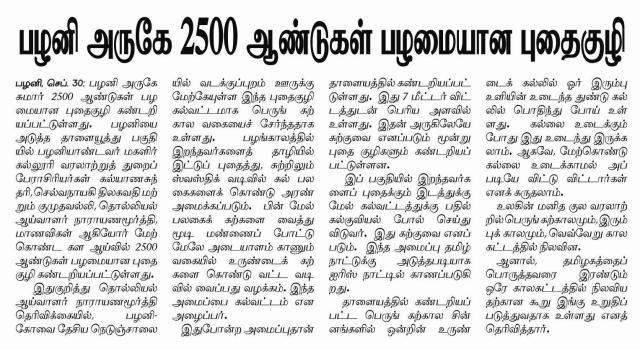




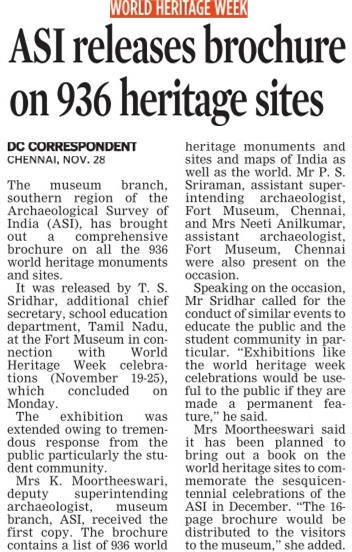
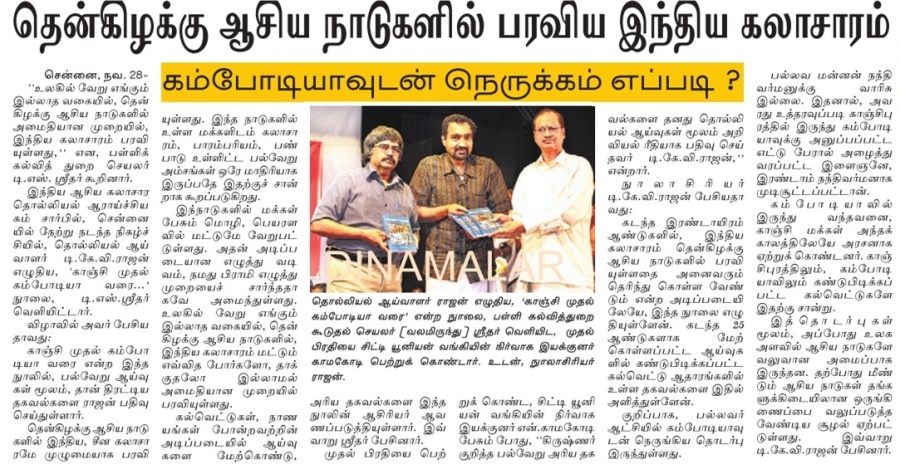

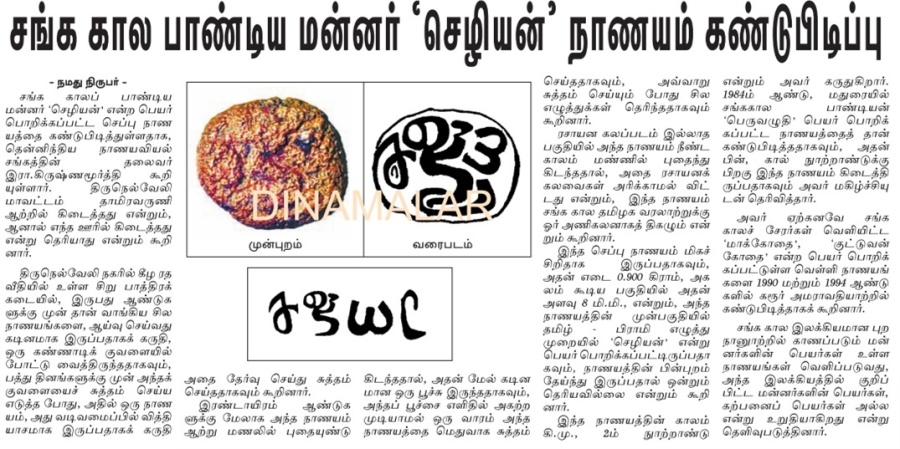
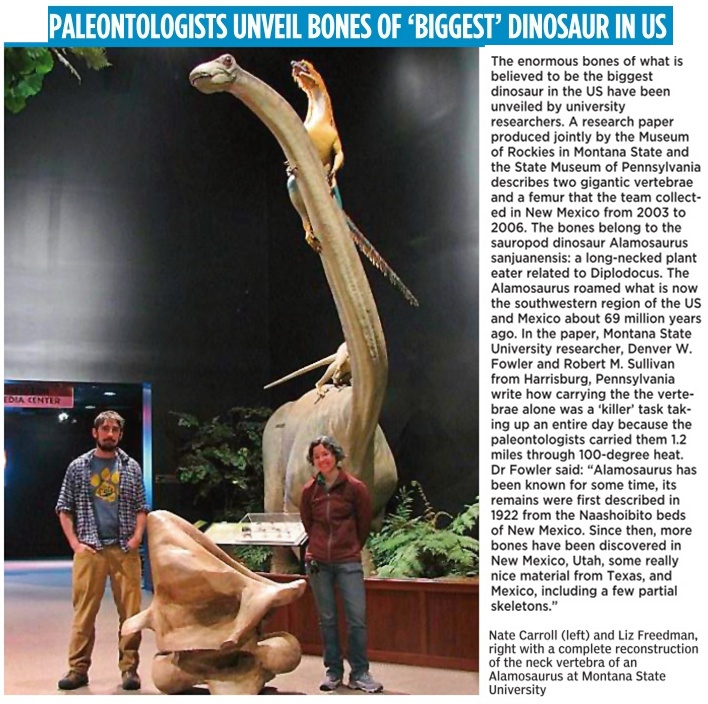


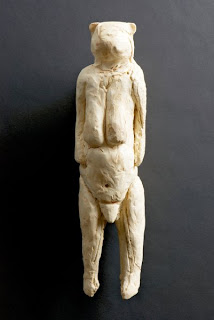


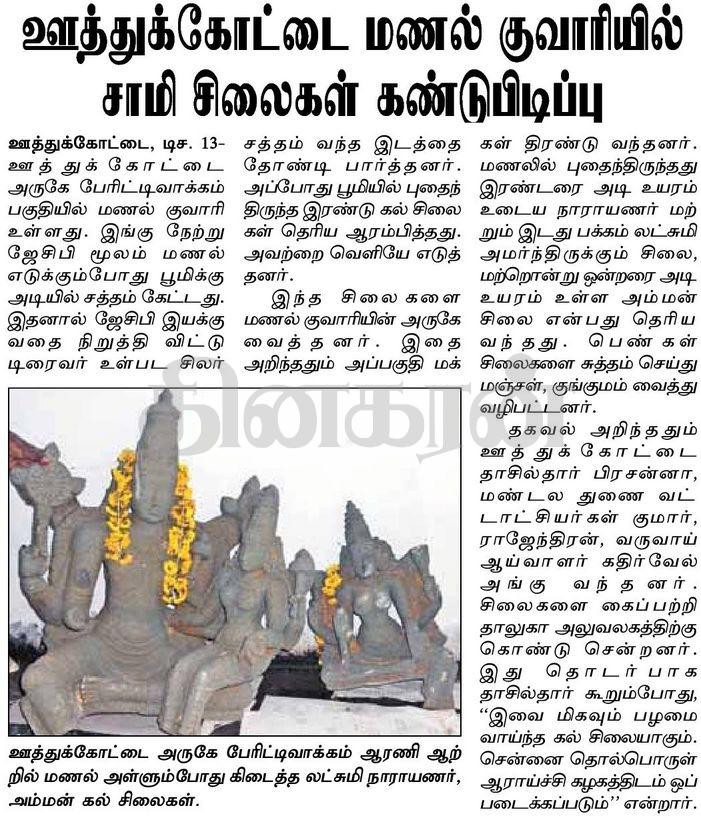


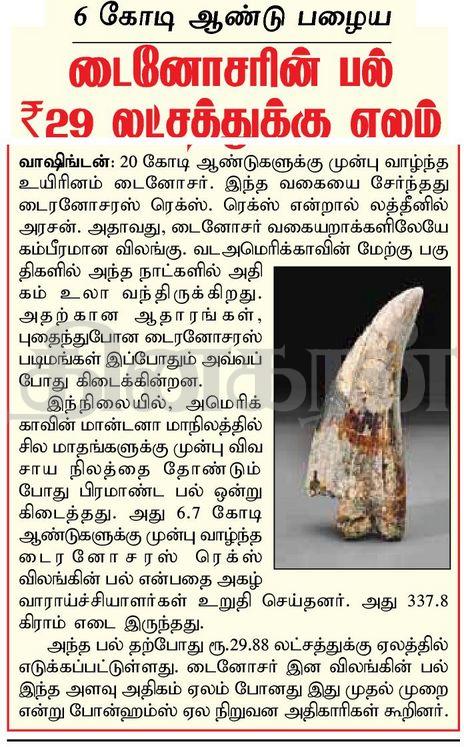

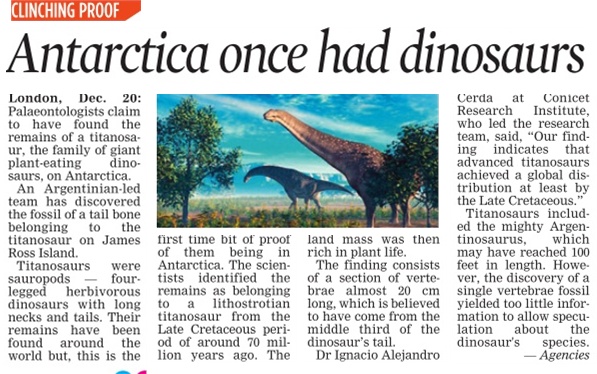



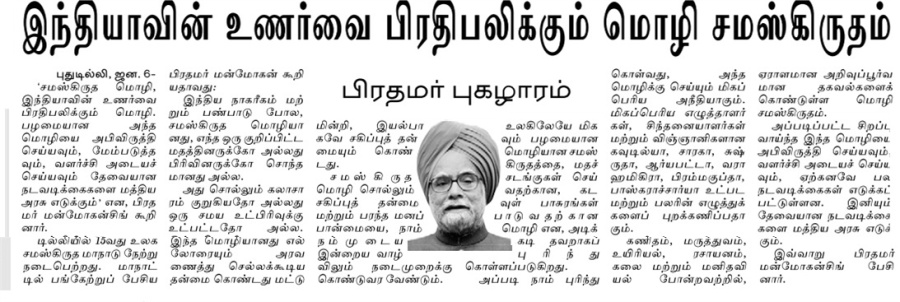
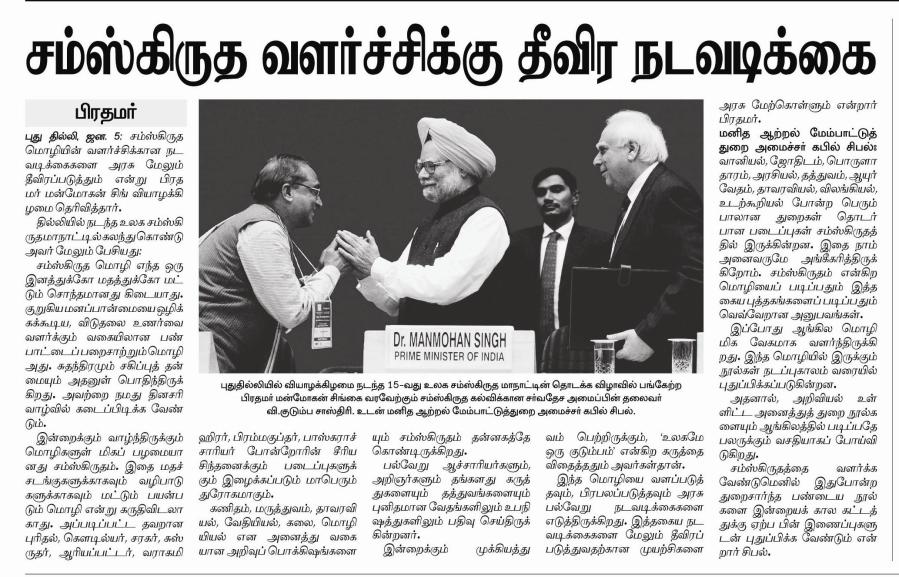

 Scientists from Germany, Bulgaria and France say the hominid pre-molar, discovered near the Bulgarian town of Chirpan, is seven million years old.
Scientists from Germany, Bulgaria and France say the hominid pre-molar, discovered near the Bulgarian town of Chirpan, is seven million years old.


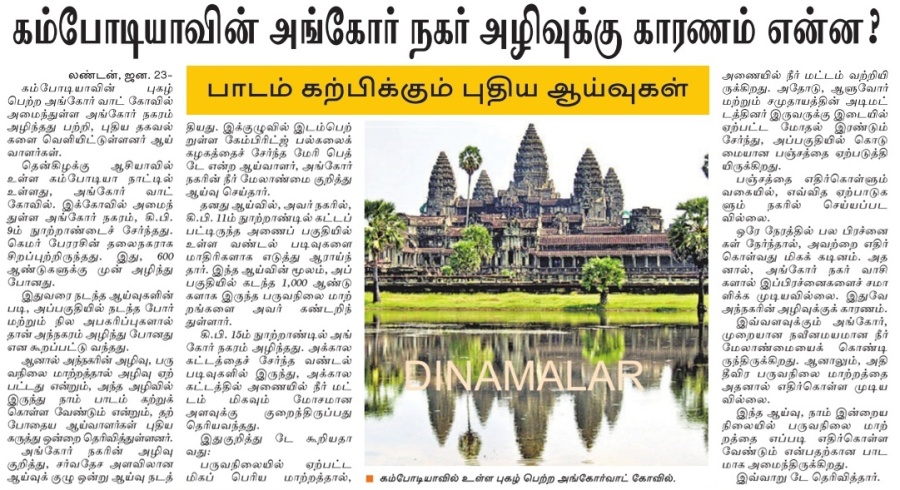






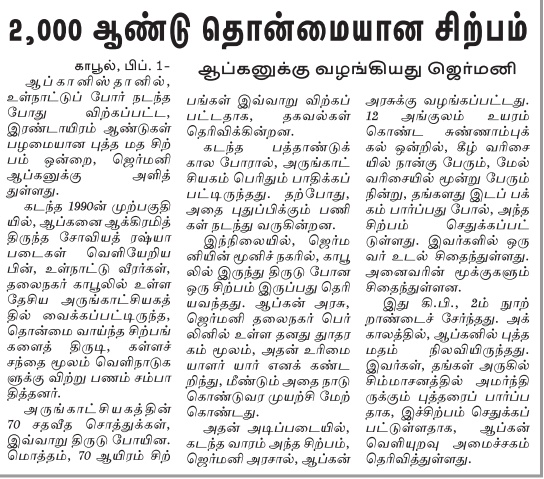

![[RIDLEY]](http://si.wsj.net/public/resources/images/RV-AF861_RIDLEY_G_20120203002423.jpg)
























